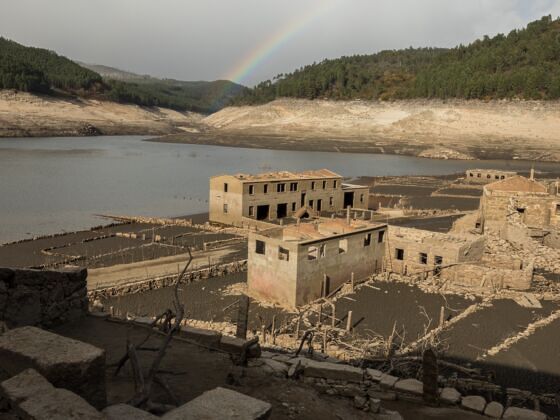The effects of climate change in Spain has unveiled a piece of hidden history. A drought has nearly emptied a dam on the Spanish-Portuguese border and revealed village ruins from 1992. Tourists and locals are flocking to the reservoir that is currently at 15 percent capacity to see the Aceredo village, which was flooded to create the Alto Lindoso reservoir in 1992.

Watch: Ghost Village That's Been Underwater Since 1992 Recently Resurfaced in a Spanish Reservoir
Visitors can find destroyed remnants like partially collapsed roofs, destroyed brick or wooden doors and beams, and the remains of an old car. An old drinking fountain with water still spouting from a rusty pipe, and crates with empty beer bottles were found around a former cafe.
“It’s terrible, but it is what it is,” Jose Alvarez, who used to work as a construction worker in the village, told Reuters. “That’s life. Some die and others live.”
The phenomenon of drowned villages coming to the surface isn’t new. The Tuscan medieval town of Fabbriche di Careggine, which was put underwater in 1946, emerges every once in a while when the Lago di Vagli reservoir in Italy is drained for maintenance. And in 2021, the Italian city of Curon rose to the surface after 70 years of being underwater.
Environment Ministry data shows that in contrast to the 61 percent capacity of Spanish reservoirs in the last decade, they have only reached 44 percent capacity this year. It’s possible the drought could become worse in the coming weeks.
If you’re fascinated by underwater cities, you don’t necessarily have to wait for decreasing water levels to see them, you just need to become a scuba diver. In China, Norway, and other places around the world, there’s plenty of drowned history to find.